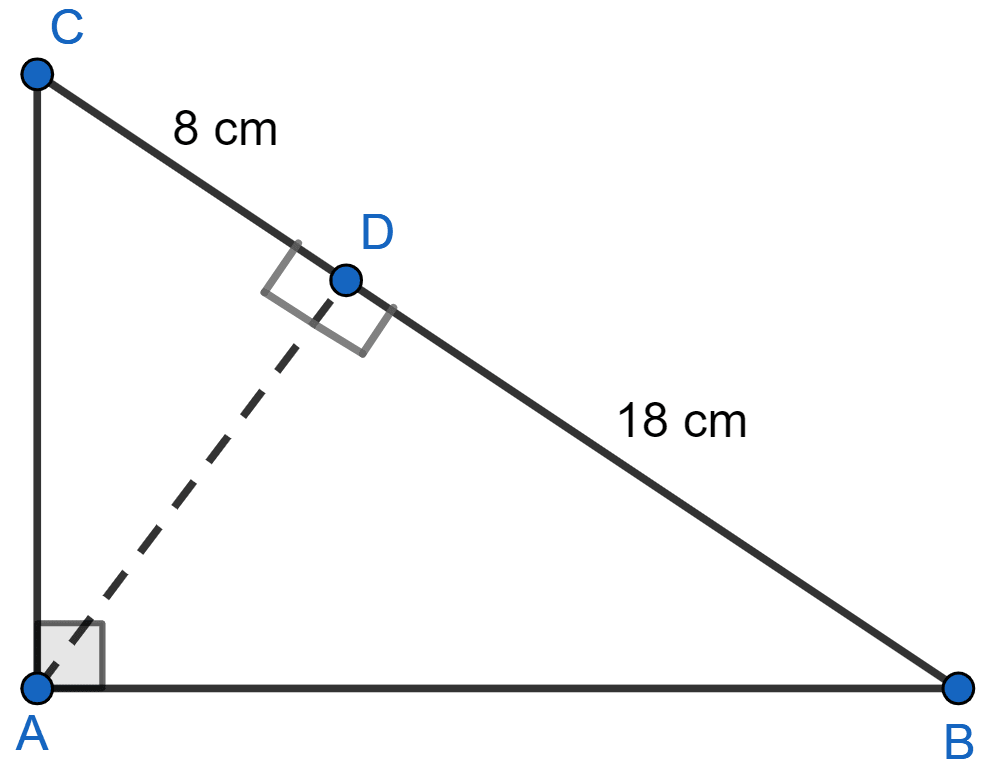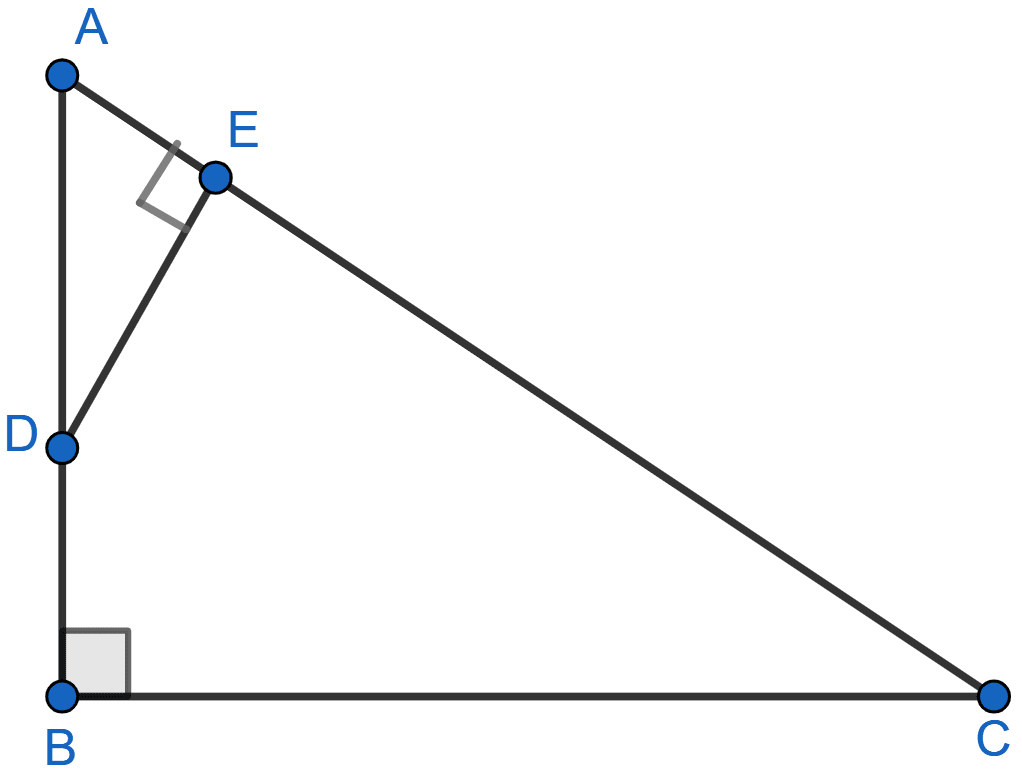Mathematics
The given diagram shows two isosceles triangles which are similar. In the given diagram, PQ and BC are not parallel; PC = 4, AQ = 3, QB = 12, BC = 15 and AP = PQ.
Calculate :
(i) the length of AP,
(ii) the ratio of the areas of triangle APQ and triangle ABC.

Similarity
8 Likes
Answer
(i) Given,
△APQ ~ △ABC.
Since, corresponding sides of similar triangle are proportional to each other.
Since, length cannot be negative.
Hence, AP = 5 units.
(ii) We know that,
The ratio of the areas of two similar triangles is equal to the ratio of squares of their corresponding sides.
Hence, the ratio of the areas of △APQ and △ABC = 1 : 9.
Answered By
5 Likes
Related Questions
In the given figure, ABC is a right angled triangle with ∠BAC = 90°.
(i) Prove that : △ADB ~ △CDA.
(ii) If BD = 18 cm and CD = 8 cm, find AD.
(iii) Find the ratio of the area of △ADB is to area of △CDA.

ABC is a right angled triangle with ∠ABC = 90°. D is any point on AB and DE is perpendicular to AC. Prove that :
(i) △ADE ~ △ACB
(ii) If AC = 13 cm, BC = 5 cm and AE = 4 cm. Find DE and AD.
(iii) Find, area of △ADE : area of quadrilateral BCED.

Given : AB || DE and BC || EF. Prove that :
(i)
(ii) △DFG ~ △ACG.

PQR is a triangle. S is a point on the side QR of △PQR such that ∠PSR = ∠QPR. Given QP = 8 cm, PR = 6 cm and SR = 3 cm.
(i) Prove △PQR ~ △SPR.
(ii) Find the lengths of QR and PS.
(iii)
